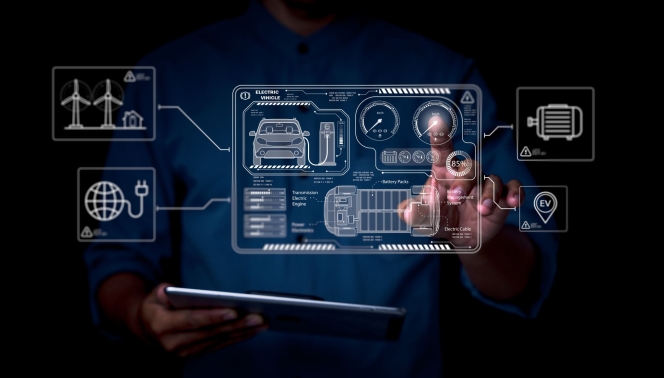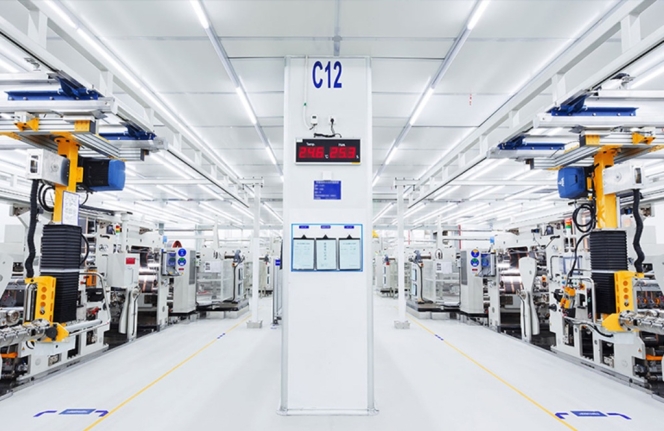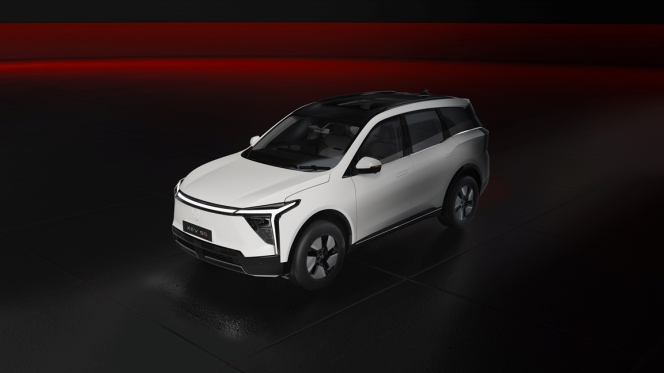
Like an IC engine automobile where the engine and the driveline make up the key aggregates, in EVs the key aggregates are the battery and the motor. While an IC engine may account for 23 to 30 percent of the total cost and the driveline component such as a gearbox, propeller shaft, transaxle or a differential may together cost another 15 to 20 percent of the total vehicle cost, in the case of an EV, it may not be that simple.
It is therefore necessary to find out about the battery and motor replacement cost before buying an EV. A young Canadian owner – Kyle Hsu – of Hyundai Ioniq 5 was thrown out of his seat almost when he found out that the warranty was void on the battery pack of his one-year-old electric vehicle and it would cost him a little over $ 60,000 to replace it! The car was bought in 2022 for $ 56,000.
Hsu was driving to the interior of British Columbia, according to the YouTube channel Motormouth which has highlighted the development, when he avoided something on the road. On the cautionary side, he dropped at the dealer to get the car checked after he returned from the trip.
The battery cover underneath the e-car was founded to have been scratched. The dealer conveyed that the battery behind the cover had been impacted and should be replaced since it may explode. It was not repairable.
Hsu took the help of the insurance company once he was told that it would cost over $ 60,000 to replace the battery. The insurance company told him that his vehicle IDV was less than the cost of replacing the battery. If he were to choose to replace the battery, the insurance costs were likely to go up by 50 percent despite his clean driving record.
Responding to Motormouth, the Hyundai Canada PR Manager Jennifer Mcarthy is known to have said that it amounts to a very rare situation and Hyundai Canada’s customer experience team should have had the opportunity to access the situation prior to sharing of costing.
The cost of battery replacement depends on the nature of the damage, type of battery and repairs required. There is no one set price for ever replacement while battery cost is a challenge for the business. Pricing strategy for batteries that is reasonable, fair and in line with market competitiveness is being worked on, Mcarthy is known to have expressed further.
In his column in The Guardian newspaper recently, actor and automobile enthusiast Rowan Atkinson stated that he loves electric vehicles and was an early adopter. He however felt increasingly duped.
An electrical and electronic engineer by education, Atkinson is of the opinion that electric motoring does not seem to be quite the environmental panacea it is claimed to be.
Stating that electric cars have zero exhaust emissions, which is a welcome development, particularly in respect of the air quality in city centres, Atkinson said in his column, if you zoom out a bit and look at a bigger picture that includes the car’s manufacture, the situation is very different. “The problem lies with the lithium-ion batteries fitted currently to nearly all electric vehicles: They’re absurdly heavy, huge amounts of energy are required to make them and they are estimated to last only upwards of 10 years,” he averred.
Drawing attention to solid-state battery development, Atkinson expressed that if hydrogen wins the race to power trucks and as a result every filling station stocks it, it could be popular and accessible choice for cars.
Till then, keeping the old petrol vehicle may be better than buying an EV since it costs far less to make and can last for 30 years with tender loving care.
If the majority of the first owners would retain their vehicles for over five years, it would result in an amount of CO2 reduction brought about by new cars being put on the road. The entire chain of raw material selection to manufacture, to the end of the road has its share of carbon emissions.
Though it may be better to reduce our reliance of IC engine vehicles, it would be worth considering that the existing vehicles have already paid their environmental dues – cost to the environment – during their manufacturing process. A lot of technological development has also made them far less polluting and reliable than they were a few years or decades ago.
Also, the possibility of writing off a one-year-old EV because its battery replacement cost exceeds the vehicle purchase cost is countered by the engine, gearbox or a body part being repairable in case of an IC engine vehicle.
Many of you would also remember the head honchos of some auto companies in India saying that BS VI emission compliant vehicles will only emit water through the tailpipe and will be cleaner than the ambient air.
The time is ripe to understand what is ‘actually’ environment friendly, an EV or an IC vehicle. The time is right to test and analyse if it the automobiles that are causing more pollution in Indian cities or there are other sources. An air filled with so much dust does not seem like the handiwork of automobiles rather than the gigantic civil projects that being worked on.
Trinseo Launches Fourth-Generation Binder For The Next Wave Of EV Batteries
- By MT Bureau
- December 03, 2025

Trinseo has introduced its latest innovation, the Fourth-Generation SBR Binder Platform, designed to meet the evolving demands of electric vehicles and battery energy storage systems. This development reflects the company's strategic focus on delivering high-performance materials essential for the global shift towards sustainable energy.
The platform results from advanced polymer science and collaboration with battery manufacturers, targeting key industry requirements such as increased energy density, superior durability and more efficient production. It provides a significant improvement in peel strength, enabling stronger electrode bonds, thicker coatings and higher manufacturing speeds. These attributes are vital for developing higher-capacity batteries that can extend driving range and improve storage solutions.
The inaugural product, VOLTABOND 109 Latex Binder, offers this next-generation performance with broad compatibility across various anode materials and manufacturing processes. Its design ensures excellent stability and low resistance, supporting faster charging and long-term reliability. To ensure robust supply, Trinseo will produce the platform locally within major global regions, enhancing responsiveness to battery production hubs.
Rooted in decades of expertise, this new platform establishes a foundation for future innovations tailored to diverse customer needs across the battery value chain.
CATL And Stellantis Begin Work On EUR 4.1 Billion Spanish Battery Plant
- By MT Bureau
- November 28, 2025

CATL and Stellantis broke ground on a EUR 4.1 billion battery plant in Figueruelas, Spain, on 26 November. The 50:50 joint venture will produce lithium-iron-phosphate battery cells and targets an annual production capacity of 50 GW/h.
The project, which is Spain’s largest battery factory, is backed by over EUR 300 million in EU funds, with production expected to start in late 2026.
According to unions, around 2,000 Chinese workers will help construct the site, a point of contention with local authorities and residents. Also, 3,000 Spanish staff are to be hired and trained later.
Spanish authorities and residents have voiced concerns about job opportunities for local workers and potential strain from the influx of foreign employees. CATL Vice President Meng Xiangfeng said earlier in November the company needed experienced technicians to build and fine-tune production lines, with plans to train local workers to take over operations gradually.
David Romeral, Director General of CAAR Aragon, a network of automotive businesses in the region, said: “We don’t know this technology, these components – we’ve never made them before. They’re years ahead of us. All we can do is watch and learn.”
The regional government is organising work permits for arriving workers while seeking to attract battery supply chain companies to Aragon. Some Chinese technicians and managers have already arrived, with several hundred more expected by year-end and nearly 2,000 by the end of next year.
CATL’s approach contrasts with its Hungarian site in Debrecen, where it hired mostly locals to build its European plant. However, a lack of local workers caused production to be delayed from late 2025 into mid-2026. The Figueruelas facility will serve as CATL’s third European manufacturing operation, alongside the Hungarian plant and one in Germany.
- Neuron Energy
- Equanimity Ventures
- Rajiv Dadlani Group
- Thackersay Family Office
- Chona Family Office
- Pratik Kamdar
- Rajesh Sehgal
- Rajiv Dadlani
Neuron Energy Secures INR 310 Million To Expand EV Battery Manufacturing For Four-Wheelers & Buses
- By MT Bureau
- November 27, 2025

Neuron Energy, an EV battery manufacturer, has raised INR 310 million in a Pre-Series B funding round led by Equanimity Ventures, Rajiv Dadlani Group, Thackersay Family Office and Chona Family Office, with participation from Family Offices and HNI investors. With this, Neuron Energy has raised INR 810 million to date.
The funding will be used to expand Neuron Energy’s manufacturing capacity to 3 GWh and to establish a fully automated, large-scale battery facility for electric four-wheelers and buses at Chakan, Pune. The capital will also strengthen the company’s R&D capabilities, accelerate domestic growth, and broaden its footprint in international markets.
Pratik Kamdar, CEO and Co-Founder, Neuron Energy, said, “This Pre-Series B round is a defining step in our mission to industrialise world-class battery manufacturing in India. As EV adoption accelerates, we are focused on building capacity, embedding automation, and pushing the boundaries of performance and reliability. This investment ensures we can deliver at scale, both in India and globally.”
The company said it operates with a low-CapEx and low-OpEx business model. It has been growing profitably year-on-year and is on track to achieve INR 2 billion in revenue this year. The company is also confident of achieving sales of over INR 9 billion, with profitability, over the next few years.
Rajesh Sehgal of Equanimity Ventures, added, "We see immense potential in Neuron Energy’s approach to EV battery innovation and scalability. Their focus on quality, automation, and energy efficiency aligns with the evolving demands of the EV industry in India and beyond. We are proud to support their next phase of growth as they scale into new vehicle categories and manufacturing capacities."
The new facility reinforces the company’s position in two-wheeler EV batteries and signals a strategic entry into heavier vehicle segments. This supports Neuron’s vision to become a comprehensive EV battery solutions provider.
Rajiv Dadlani, from the Family Office of the Rajiv Dadlani Group, said, "Neuron Energy demonstrates remarkable potential to become the market leader, with their renewed focus, in delivering top-quality products. The company and its founders are highly committed to delivering rigorously tested and safe-to-use Li-Ion smart batteries. We are confident that they will continue to thrive and set new standards in the industry."
Mahindra Intros XEV 9S Electric 7-Seater SUV At INR 1.99 Million, Deliveries From 23 January
- By MT Bureau
- November 27, 2025

Mahindra has launched the XEV 9S, an electric 7-seater SUV built on the INGLO platform, with prices starting at INR 1.99 million (ex-showroom). The XEV 9S is powered by MAIA, described as India’s fastest automotive mind.
The EV comes with a 70 kWh battery, delivering a power of 180 kW and 380 Nm of torque. It offers a claimed real-world range of 500 km from its LFP battery, which comes with a Lifetime Warranty. The SUV is stated to be the fastest 7-seater in its class, reaching zero to 100 kmph in 7.0 seconds, with a 202 kmph top speed.
The fully-loaded Pack Three Above 79 kWh variant is priced at INR 2.94 million ex-showroom with bookings open on 14 January 2026 and deliveries starting on 23 January 2026.
R Velusamy, President - Automotive Business, Mahindra & Mahindra and Managing Director, Mahindra Electric Automobile, said, “We have always believed that technology is meaningful only when it expands human possibility. The XEV 9S built on the INGLO electric origin platform does exactly that by creatin space – more than anyone else and gives a smooth and noise free ride. THE MAIA brain enables many of its high-tech features, making it the most advanced offering for its price.”
Nalinikanth Gollagunta, Chief Executive Officer - Automotive Division, Mahindra & Mahindra and Executive Director, Mahindra Electric Automobile, said, “The future of Indian mobility will belong to brands that don’t just electrify vehicles, but reimagine categories. With the XEV 9S, we’re not just playing in the EV segment, we’re expanding it. This SUV signals the start of a BIG new electric era for Mahindra - one built on scale, on purpose, and on a deep understanding of how India moves. The attractive prices starting at ₹ 19.95 Lakh make a very high-tech product accessible, with bookings opening on Jan 14 and deliveries start on Jan 23.”
The XEV 9S is an expression of Mahindra’s Heartcore Design philosophy, featuring a stance, lines, a gloss finish and interiors. The vehicle is designed to be silent on wheels.
Key highlights include:
- Space: Offers 4,076-litre of cabin space (for front and second row), boot space up to 527-litre and 150-litre of Frunk space. The third-row features 50:50 split seats.
- Suspension: Features Intelligent Adaptive dampers with i-Link at the front and 5-Link independent suspension at the rear.
- Driver Aids: Includes L2+ ADAS with five Radars and one Vision Camera, Driver Drowsiness Detection with DOMS (Eyedentity) and Secure360 Pro for live view and recording.
- Interior Comfort: Features Powered Boss Mode, ventilated second row seats, recline and sliding adjustment, sunshade for second row windows, Acoustic ‘Laminated’ Glass and wireless phone charging.
- Technology: Equipped with Brake by Wire with IEB, High Power Steering with VGR, VisionX – AR HUD, AutoPark Assist, and 140 features including Digital Key, NFC and Charge Scheduler.
- Entertainment: Includes a 16-Speaker Harman Kardon Audio system with Dolby Atmos, three 31.24 cm screens, 5G Connectivity and Fun & Work Apps.
- Efficiency: Running costs are INR 1.2 per km, with maintenance costs of INR 40 paise per kilometre and negligible road tax. Business owners benefit from 40 percent depreciation.
Pratap Bose, Chief Design & Creative Officer - Auto & Farm Sectors, Mahindra & Mahindra, said, “Designing the XEV 9S wasn’t about adding lines to a surface, it was about shaping a feeling. We wanted it to feel like stepping into a personal sanctuary, yet one that carries the pulse of modern India. Electric gave us the canvas; INGLO gave us the freedom to sculpt light, space and comfort. The result is an SUV that wears its size with grace and its technology with humility. It’s expressive, it’s calm, and it’s unmistakably Mahindra - built for a nation whose aspirations are only getting bigger.”






Comments (0)
ADD COMMENT